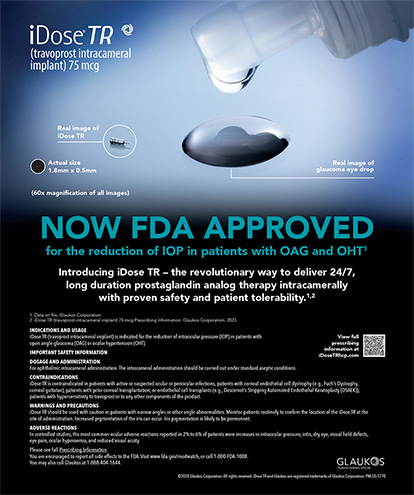Surgeons agree that the understanding, diagnosis, classification, and treatment of astigmatism should be straightforward to those in the medical field. I have found, however, that this sentiment is not the reality for refractive surgeons and ophthalmologists in general. Ask a colleague to explain mixed astigmatism, and it is likely that the reply will include a fair amount of hemming and hawing.
Why is the treatment of astigmatism so perplexing? I believe this type of refractive error first bewilders ophthalmologists during their residency. The toughest OKAP book for residents to understand and apply clinically is on optics. I can imagine the number of residents who have insisted on disregarding this book and hoped that the other sections would carry them through their OKAP testing. To neglect a clear understanding of optics can be detrimental, because, in cataract implant and refractive surgery, understanding optics is the foundation for hitting the refractive target!
If the ophthalmologist proceeds to perform refractive and lenticular surgery without fully understanding optics and refraction, it would be analogous to flying a plane without an understanding of its fundamental elements.This issue of Cataract & Refractive Surgery Today places emphasis on treating astigmatism. Choosing a treatment for this refractive error depends on whether we are referring to the patient's corneal surface or refraction. Corneal astigmatism occurs whenever the central corneal surface is not spherical. In some cases, however, the spherical eye can still have an astigmatic refraction. The astigmatism in these cases originates from the posterior corneal surface, the anterior and posterior crystalline surfaces, or possibly even the retinal surface. Astigmatism can be further delineated as regular, nonorthogonal, or irregular.
Surgeons treat regular astigmatism with symmetric (conventional) tissue removal (ablation), symmetric optics, IOLs, spectacles, or soft contact lenses. The remaining classifications require an asymmetric (custom) ablation or a rigid contact lens to correct the asymmetric surface (refraction). Regarding the diagnosis of astigmatism, we have numerous tools, such as retinoscopy, refraction, trial frame lenses, keratometers, placido discs, photokeratoscopy, autorefraction, keratometers, automated corneal topography, wavefront analysis, and ray-tracing technology. As we peruse this list of methods, we navigate the initial qualification to the ultimate quantification of ocular astigmatism.
The staff and contributors of CRSToday hope that this issue will provide key information on the diagnosis, understanding, and management of a condition that is part of the “bread and butter” of the cataract and refractive surgical process. In this issue, Sam Omar, MD, provides us with an overview of astigmatism treatment. James Gills, MD, and Myra Cherchio, COMT, discuss treating pre-existing astigmatism in cataract patients. Maurice John, MD, writes about treating high hyperopic astigmatism. Douglas Grayson, MD; Michael Rosenberg, MD; Thomas Chi, MD; and Tal Raviv, MD, share their thoughts on a challenging astigmatism case. Finally, Peter Hersh, MD, discusses the aspects of surgically induced astigmatism after CK. I believe that the following pages cover the topic well, and I trust that you will find this issue helpful in your practice.


